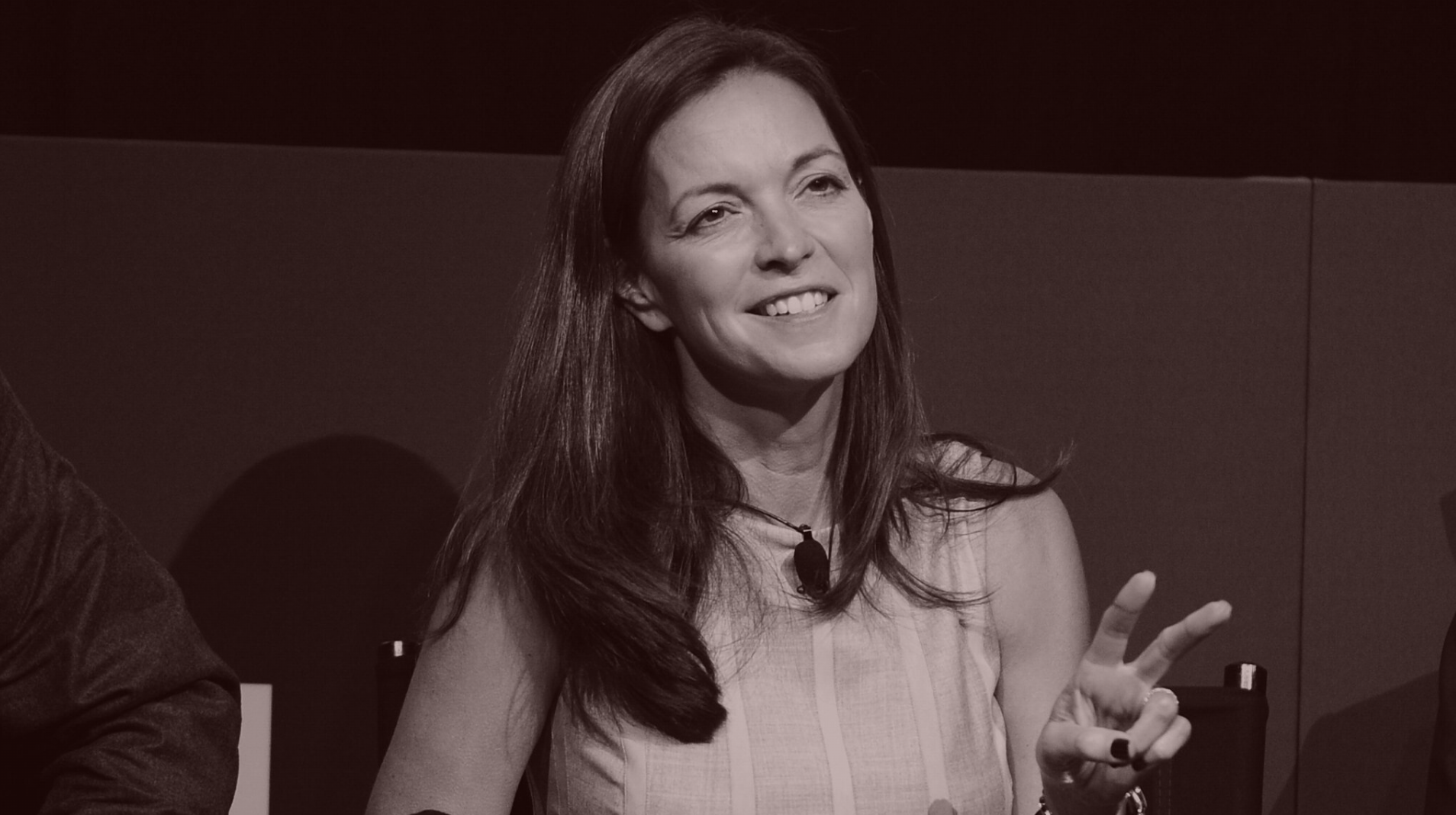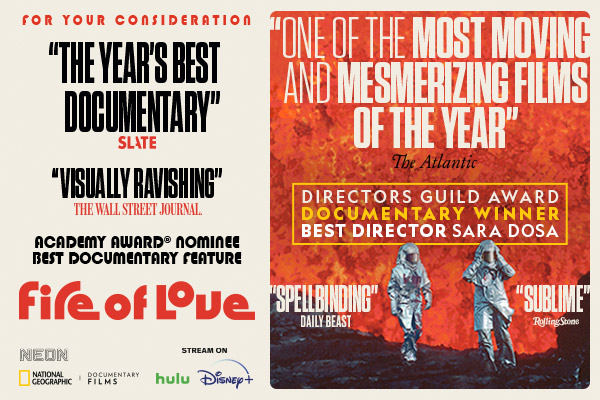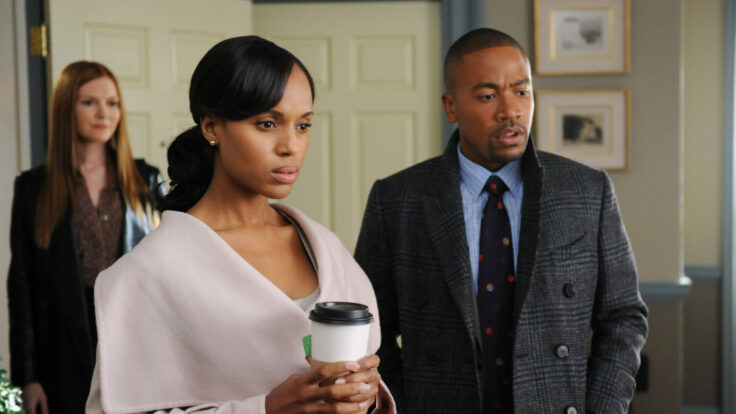 |
 |
|
Happy Tuesday from Brooklyn, and welcome back to What I’m Hearing+, my weekly complement to Matt Belloni’s flagship newsletter (sign up here if you’re not already on Matt’s list) and Puck’s expanding Hollywood coverage. Also, please take a moment to fill out our reader survey if you haven’t yet!
Tonight, a close look at AMC’s embattled streaming project, AMC+, and what the future holds for sub-scale platforms at a moment of industry-wide consolidation.
|
 |
| Can AMC+ Be Saved? |
| The niche streamer—a Dolan family pet project which just beat Wall Street’s expectations—seems like fish food in the streaming wars. But has it already negotiated its way out of an acquisition? |
|
|
|
| I was having drinks with an industry friend the other night when the conversation turned to AMC Networks. It wasn’t about chairman Jim Dolan, the New York sports supervillain threatening to ban liquor at Rangers games, or his decision to appoint his wife and longtime AMC board member, Kristin, as the company’s new C.E.O. Or even AMC’s recent earnings reveal, which beat expectations, sending the stock soaring 27 percent. Mainly, we talked about something Dolan said during a rare earnings call appearance: “A customer can sign up, binge your product for a month, and then leave you.”
In typically succinct language, Dolan summed up the challenges of a niche streaming service with a small catalog, one that is doubly burdened by the modern, Zaz-esque necessity of generating hits while also syndicating its library content to optimize revenue. On one hand, AMC added 700,000 subscribers across its various streaming platforms to hit 11.8 million, and increased streaming revenue by 41 percent. On the other hand, unlike the main wholesalers—the HBO Maxes, Netflixes, and Prime Videos of the world—AMC doesn’t have a strong catalog to boost engagement. So AMC+ has to fight harder for consistent subscribers. That’s pricey—a point underscored by AMC refusing to reveal how much the streaming business contributed to its nearly $400 million operating loss in the quarter.
Ostensibly, AMC is aiming for 20-25 million subscribers by the end of 2025, according to its previous guidance, but it is also looking at the best content optimization pathways available to ensure revenues remain strong as its linear networks—AMC, IFC, and Sundance Channel—decline. This is, of course, the new normal in the industry. But it may be easier for Warner Bros. Discovery to license second-tier content while holding onto core assets that lure audiences and confer brand identity. AMC doesn’t enjoy this latitude. Its biggest hit, The Walking Dead, has been licensed out to multiple partners, including Netflix. And the company is heavily reliant on that licensing revenue, which increased by 152 percent last quarter. As even Dolan has noted, AMC’s content is less valuable on its owned-and-operated streaming platform than on the open market.
Indeed, AMC operates more like a studio than a platform. The company doesn’t own Breaking Bad (Sony) or Mad Men (Lionsgate). And Walking Dead is tied up in years-long third-party deals. AMC’s $1 billion market cap makes it a minnow in the shark tank, and presumably catnip for a larger player, but how much is it actually worth when so much of its content is either tethered to other platforms, or wholly owned by a competitor?
In short, AMC is a company at the intersection of what was and what could be. It’s not alone in this moment, but all eyes are on it from corner offices across Los Angeles and New York for that very reason. Inside AMC is the once-beloved and successful cable brand that wants to fight its way into the future. Outside AMC, hovering over the company like vultures, are the bigger wholesalers, looking for any advantage to help them succeed in the direct-to-consumer market. It is a relatively small player in the ongoing streaming wars, but it’s in a position that many other retail networks and content studios are about to experience. That’s what makes it such a fascinating case study.
|
|
A MESSAGE FROM OUR SPONSOR
|
 |
|
FOR YOUR CONSIDERATION BEST DOCUMENTARY FEATURE
NAMED ONE OF THE BEST FILMS OF THE YEAR BY MORE THAN
TWO DOZEN OUTLETS INCLUDING
Rolling Stone, Entertainment Weekly, The Wall Street Journal, The Film Stage,
Forbes, Vulture, Associated Press, Vogue, Indiewire, Paste Magazine, The Spool, Baltimore Magazine, The Playlist, The Wrap, Variety, Rotten Tomatoes
WATCH A VIRTUAL Q&A WITH DIRECTOR AND PRODUCER SARA DOSA AND
• Bonni Cohen (Director, Producer – Actual Films)
• Lana Wilson (Director)
• Alice Rohrwacher (Director)
• Ruby Yang (Documentary Filmmaker)
• Petra Costa (Documentary Filmmaker)
• Jazz Tangcay (Senior Artisans Editor, Variety)
https://fireoflove.natgeofilmsfyc.com/
PW: FIREOFLOVE
|
|
|
|
|
| Hope isn’t a business strategy, but these days many entertainment companies are adhering to a related economic philosophy: It’s time to wait-and-see. Dolan himself effectively put it another way: It’s financially incumbent upon the largest players to find a sustainable business model. In the meantime, the bit players, like AMC, should wait it out and benefit from the lessons and epiphanies that arise.
This was described to me by one executive as a mediocre but safe bet, but I think it’s a fool’s errand. Not only is AMC trying to pivot from a decaying cable brand (affiliate revenue dropped another 7 percent in the quarter) to a streaming-first organization, it’s also trying to re-train its audience to expect something different from the brand as it transforms. Audience training is often met with skepticism, but it’s so important in the direct-to-consumer conversation. After all, training sets consumer expectations, which lay the basis for value perception, which then drives decision-making about retention. If audiences are trained to expect certain content, consistently, that confers value. And while licensing may keep the lights on, it teaches audiences a terrible lesson—they can find a brand’s top shows somewhere else.
AMC, despite its rosy quarter, is the case in point. The third most-watched show in the U.S. during the week of Jan. 16 was Walking Dead—an AMC project that was binged on Netflix. AMC+ has never topped the weekly streaming charts as a streaming platform, but its content often does so on other platforms. Once upon a time, this was a net positive. “The Netflix Effect,” wherein under-discovered linear shows popped on the streamer and received a veritable second life, helped titles like Riverdale and All American on the CW. But now CW is a Nexstar asset, and those shows are spread out across HBO Max, Paramount+, and elsewhere thanks to their respective owners (Warner Bros. Discovery and Paramount). How consumers engage with those CW series in a streaming age has less to do than ever with the CW, itself. Walking Dead is valuable to AMC, but it’s likely more valuable as a title to license than it is for bringing in and keeping the subscribers needed for a viable direct-to-consumer business.
|
|
|
| AMC’s other challenge is that it doesn’t have the string of original hits required to drive a high value perception. AMC+ saw success with Interview with the Vampire, which reached a peak demand of 33.4x compared with all other series in the U.S. back in October, according to Parrot Analytics, where I work as director of strategy. The company additionally noted that Interview with the Vampire (alongside Walking Dead’s final season premiere) helped draw 75 percent of new subscribers the weekend of Oct. 2, when both titles premiered.
Mayfair Witches, however, has seen less than half of the same peak demand since it premiered, according to Parrot. Spinoffs like Fear the Walking Dead and Tales of the Walking Dead generate practically zero search traffic interest compared to The Walking Dead, according to Google Trends. While Fear the Walking Dead broke Nielsen cable records when it premiered in 2015, more recent seasons of the shows have not found the same success.
Meanwhile, niche programs and films from smaller services that AMC+ has incorporated into its main streaming network including from Shudder and Sundance Now, help draw modest audiences, but it’s not enough to offset the decline in the linear business. AMC Networks’ core business dropped faster than executives had projected, and streaming is still nowhere close to catching up. This is, of course, the crossroads that Dolan finds himself in: cutting costs across the board and looking into better monetization pathways for AMC’s most lucrative content from its various networks.
There’s an oversaturation of content in the general entertainment space: More television than ever is being made, but the focal point for consumers’ attention is narrowing. AMC+ has a mainstream hit from time to time, but to play in that space requires a consistency that even some of the most prominent premium general entertainment brands are struggling to find.
So if the profit margin on linear continues to decline, and streaming doesn’t manage to pull the profits that Dolan imagined, AMC is left in a tough position. The real waiting game here, one can only assume, is waiting for some bigger player to bite.
|
|
|
|
|
| One recent conversation I had with a former studio executive turned to which company would actually benefit from owning AMC. As noted above, the likelihood of a traditional player buying AMC is low: Disney, WBD, and Paramount don’t need more general entertainment content. Disney is trying to cut $3 billion, which includes entertainment costs. Paramount’s Showtime is now focused on franchises. WBD has HBO. You could make an argument for Starz, owned by Lionsgate, but that’s another company looking for a buyer. AMC’s catalog might sweeten the overall value of Starz, but it’s still a pricey buy that comes with a lot of risk.
Perhaps Apple, which needs a stronger catalog to supplement its slate of originals, could be a prospective buyer. But again, what does Apple, or any other company looking to boost its streaming profile, really get with the purchase? Why not just license The Walking Dead, itself? The reality is that if AMC were to be sold, it would be in parts and for parts. There are aspects of the business that are valuable for different reasons to different buyers. Media reports about Roku approaching AMC about a potential acquisition—as well as tire-kicking by the likes of Sony, Blackstone, and Lionsgate over the past several years—makes sense when you consider the individual elements of AMC that could be a value add for these companies, including content from the smaller streamers that AMC owns. Broken into pieces, AMC could potentially provide specific content, built-in audiences, or advertising connections to its rivals without requiring them to take on the additional costs of actually owning and operating a subscale streamer.
Regardless of anyone’s opinion of Dolan, it’s easy to want to see AMC succeed—but it increasingly feels like being stripped and sold for parts is more inevitable by the day. For a long time, the conventional wisdom was that as some streamers soared and others were left behind, the biggest would eat the smallest in both large and simple bites. But, in reality, as my Puck partner Bill Cohan recently noted about Paramount Global, dealmaking works less elegantly. The winners pick away at what they want, and leave the unloved parts to be someone else’s problem.
|
P.S., In Case You Missed It…
|
|
Finally, a quick thank you to everyone who attended the Puck x National Geographic screening of the Oscar-nominated doc Fire of Love on Valentine’s Day. I had a blast hosting the panel in New York, and I know Dylan Byers did in Los Angeles, as well. If you missed it, you can check out some highlights from our conversations with the
filmmakers here, or via the snippet below…
Dylan Byers: Before getting into how you put the film together—the philosophy behind it, the thesis behind it—I want to start with the raw material. Sara, how were you introduced to the story of Maurice and Katia, and to the footage? What compelled you to pursue this project?
Sara Dosa: I was introduced to the story of Katia and Maurice when Shane [Boris] and I, and one of our other editors, Erin Casper, were working on another film, The Seer and the Unseen. It’s a film that I shot in Iceland that tells the story of an Icelandic woman who’s in communication with the spirits of nature. And we wanted to open it with some beguiling imagery of a world that was in the making, and volcanoes do that so exquisitely. So we started doing archival research on erupting volcanoes in Iceland, and that’s how we first learned about Katia and Maurice Krafft. Once we saw the imagery, there’s something just spectacular, otherworldly about it, and we instantly knew that this is different.
Dylan: Shane, maybe you can speak to this, but it’s clear from the film that the Kraffts saw themselves as filmmakers, even if they didn’t want to readily admit it. Certainly they had their own intentions with their footage, and their own story that they probably felt they were telling. Did you feel an obligation to that? How did you decide to tell the story the way you’ve told it?
Shane Boris: Yeah, they were celebrated in their day as scientists, and that’s clear in the film and in the footage, and clear in the books they wrote. But for us, it was also incredible that they were also artists in their own right. They were filmmakers. They were inspired by the French New Wave, and by the existentialist writers and avant-garde filmmakers of their time. And it was really important for us to include that side of their personality: the philosophical, the absurdist, and also very diligent, meticulous scientists.
Erin Casper: Maurice felt very strongly that volcanoes are for everybody. At one point, he was advocating for a museum in France inside a dormant volcano, where there would be an elevator so people could go into the earth. He was like, whatever, it’s probably not going to erupt for like 10,000 years, so we got some time! It was quite controversial, but it was fast-tracked after they passed. It exists above ground, sans elevator. It’s actually kind of an amusement park for volcanoes. We’ve been trying to get a screening there.
Julia Alexander: I imagine that will be quite the event if it happens. One special thing about the film is that because there is so much great archival footage, it feels like it would have been nearly impossible to cut anything else. I’m interested to know what you left on the cutting room floor.
Jocelyne Chaput: So much. There was probably about 200 hours on the floor, and we also had about 350 hours of television appearances and radio interviews. And then there were hundreds of thousands of still photographs…
[Read More]
|
|
|
|
FOUR STORIES WE’RE TALKING ABOUT
|

|
|

|
Black Liberation Paradox
|
|
Modern emancipation needs to be more than a function of liberating white minds.
|
|
BARATUNDE THURSTON
|
|

|
|

|
Haley’s ’24 Gift
|
|
On Nikki Haley’s early returns, Scott’s V.P. strategy, and Biden’s Kamala problem.
|
|
TARA PALMERI & PETER HAMBY
|
|
|
|
|
|
 |
|
|
|
Need help? Review our FAQs
page or contact
us for assistance. For brand partnerships, email ads@puck.news.
|
|
|
|
Puck is published by Heat Media LLC. 227 W 17th St New York, NY 10011.
|
|
|
|
|













